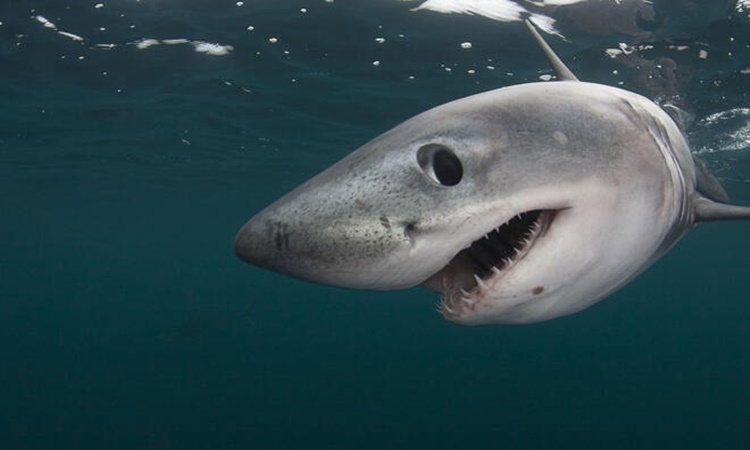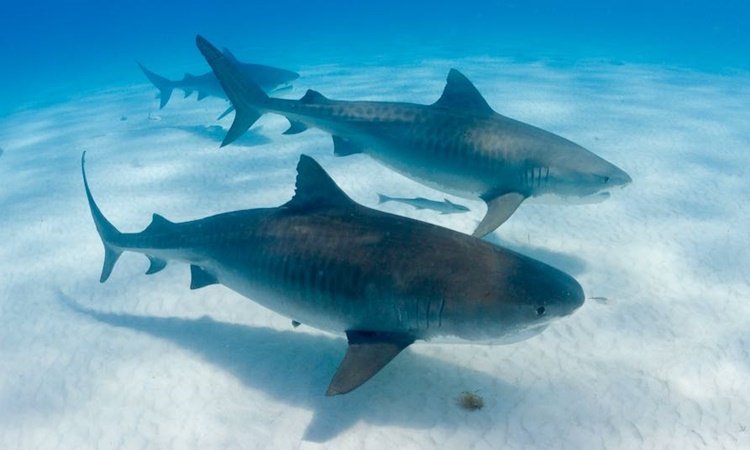Here are 7 Amazing Shark Facts
SHARK FACTS – Here are seven (7) jaw-dropping facts that will make you rethink everything you thought you knew about sharks.
Thanks to the 1975 blockbuster Jaws, an entire generation has grown up with the misconception that sharks are aggressive creatures actively seeking to attack anything in their path. However, scientists have diligently worked to dispel these myths about these ancient beings that inhabit every ocean, showcasing a broad range of variations in terms of size, shape, diet, habitat, and behavior.
Here Are Few Facts About Sharks

Sharks Are Older Than Trees
Sharks originated over 450 million years ago, predating the emergence of trees and even the era of the Tyrannosaurus rex. Early sharks may have initially been toothless and featured cartilaginous skeletons, resembling contemporary deep-sea fish such as chimeras. The first unequivocal shark-like creature emerged around 380 million years ago during the Devonian period. A significant extinction event further spurred the rapid evolution of sharks into diverse forms, sizes, and ecological niches, some of which persist to this day. Among the oldest living species is the bluntnose sixgill shark, which appeared between 200 million and 175 million years ago during the early Jurassic epoch.
We Have Learned a Lot From Shark Teeth
Given the limited remains left by cartilaginous fishes upon their demise, primarily consisting of teeth, scales, vertebrae, and rock impressions, paleontologists have successfully identified around 2,000 extinct shark species by focusing on fossilized teeth. An illustration of this is the unearthing of ancient shark teeth from the Early Devonian period, which confirmed the hypothesis that a fish named Doliodus problematicus served as an early precursor to sharks, displaying characteristics resembling both bony and shark-like fish.
There Are More Than 500 Species of Sharks in the World
Sharks are categorized into nine taxonomic orders, with notable examples including ground sharks falling under the Carcharhiniformes order, which includes over 290 species like the bull shark, tiger shark, blue shark, and hammerhead. The Lamniformes order, known as mackerel sharks, features the great white shark, basking shark, makos, goblin shark, and other species. The Orectolobiformes order, or carpet sharks, encompasses the whale shark, nurse shark, wobbegong, and others. In total, there are more than 500 shark species inhabiting the world’s oceans.
There’s a Huge Size Difference Between the Largest and Smallest Sharks
Sharks exhibit a substantial range in size, with the whale shark claiming the title of the largest living shark, reaching lengths of up to 45 feet and weighing around 20 tons, with confirmed measurements even reaching 61.7 feet. In contrast, the dwarf lantern shark, identified in 1985 in the Caribbean Sea, represents the smallest known shark species, measuring an average length of just under 7 inches. Inhabiting the ocean’s twilight zone around 1,000 feet below the surface, this shark uses bioluminescent organs on its belly for camouflage in sunlit waters.

Sharks Have a Sixth Sense
Sharks, similar to other fish, possess a sensory organ known as the lateral line that runs along their bodies. This system enables them to detect water vibrations from significant distances, aiding in prey detection. Furthermore, sharks have a unique sixth sense called electroreception, allowing them to perceive the electric fields generated by other animals. This extraordinary ability helps them locate prey and navigate their environment, utilizing Earth’s electromagnetic fields, particularly during migration.
One Shark Species Can Live for Centuries
The Greenland shark, residing in the Arctic and characterized by its slow growth, not only holds the title for the longest-lived shark but also claims the record for the longest-lived vertebrate on the planet. Estimating their lifespan has been a challenge due to the absence of cartilage indicating age. However, a 2016 study in the journal Science used carbon dating of eye proteins in multiple Greenland sharks, revealing an average age of 272 years at the time of their death. This study suggested that these sharks could potentially live up to 500 years.
You’re More Likely To Be Killed by a Cow Than a Shark
The likelihood of falling victim to a shark attack is extremely low. The 2022 global summary from the Florida Museum of Natural History’s International Shark Attack File reported 57 unprovoked shark bites and 32 provoked attacks. In contrast, other animals such as cows, hornets, bees, wasps, and dogs pose a significantly higher risk to human life. According to CDC data, cows cause an average of 20 deaths annually, while hornets, bees, and wasps account for around 48 deaths per year. Dogs contribute to approximately 19 fatalities annually.
READ ALSO: Dolphin Facts: 6 Mind-Blowing Facts About These Intelligent Marine Marvels

